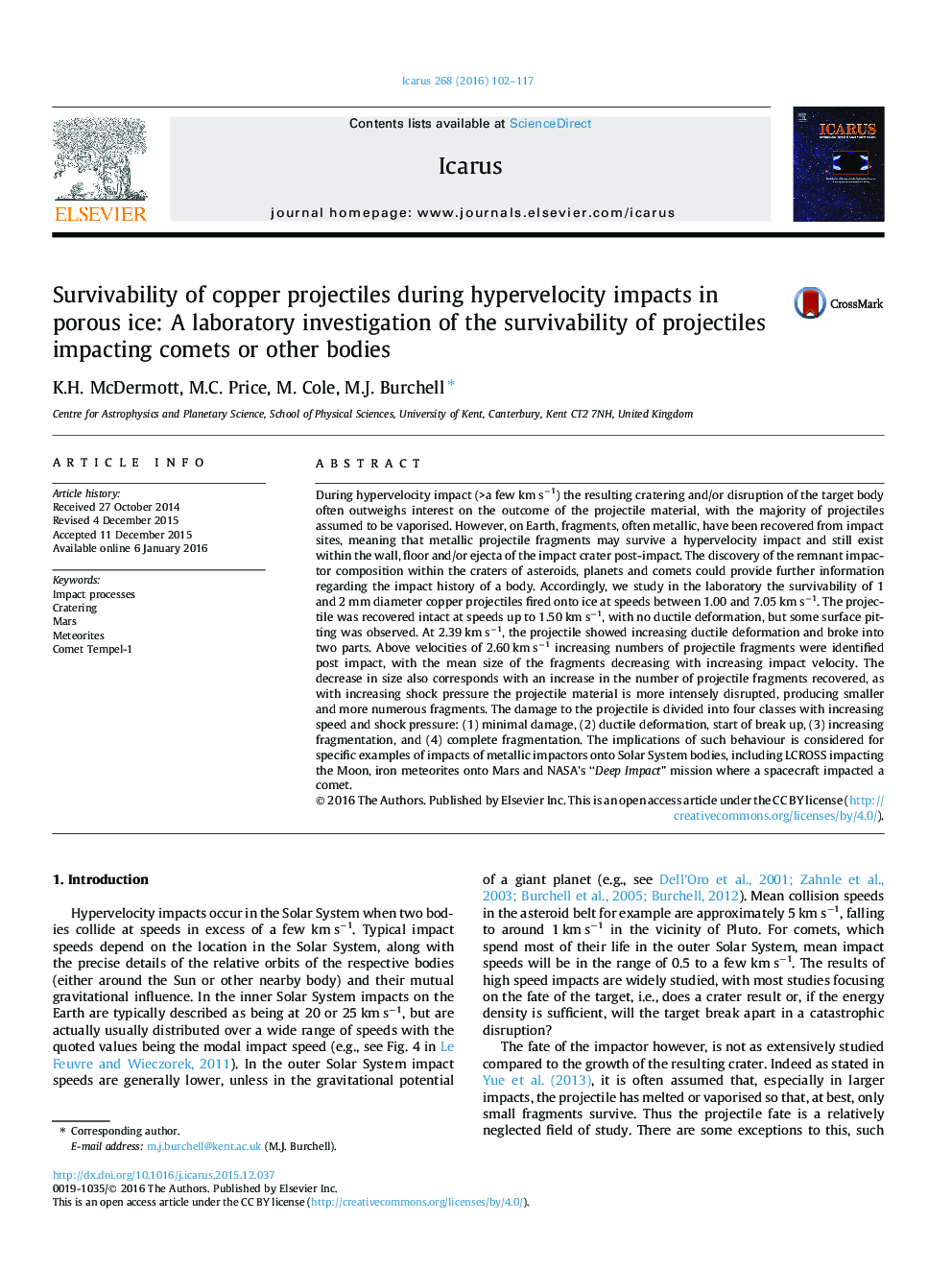| Article ID | Journal | Published Year | Pages | File Type |
|---|---|---|---|---|
| 8135576 | Icarus | 2016 | 16 Pages |
Abstract
During hypervelocity impact (>a few km sâ1) the resulting cratering and/or disruption of the target body often outweighs interest on the outcome of the projectile material, with the majority of projectiles assumed to be vaporised. However, on Earth, fragments, often metallic, have been recovered from impact sites, meaning that metallic projectile fragments may survive a hypervelocity impact and still exist within the wall, floor and/or ejecta of the impact crater post-impact. The discovery of the remnant impactor composition within the craters of asteroids, planets and comets could provide further information regarding the impact history of a body. Accordingly, we study in the laboratory the survivability of 1 and 2 mm diameter copper projectiles fired onto ice at speeds between 1.00 and 7.05 km sâ1. The projectile was recovered intact at speeds up to 1.50 km sâ1, with no ductile deformation, but some surface pitting was observed. At 2.39 km sâ1, the projectile showed increasing ductile deformation and broke into two parts. Above velocities of 2.60 km sâ1 increasing numbers of projectile fragments were identified post impact, with the mean size of the fragments decreasing with increasing impact velocity. The decrease in size also corresponds with an increase in the number of projectile fragments recovered, as with increasing shock pressure the projectile material is more intensely disrupted, producing smaller and more numerous fragments. The damage to the projectile is divided into four classes with increasing speed and shock pressure: (1) minimal damage, (2) ductile deformation, start of break up, (3) increasing fragmentation, and (4) complete fragmentation. The implications of such behaviour is considered for specific examples of impacts of metallic impactors onto Solar System bodies, including LCROSS impacting the Moon, iron meteorites onto Mars and NASA's “Deep Impact” mission where a spacecraft impacted a comet.
Related Topics
Physical Sciences and Engineering
Earth and Planetary Sciences
Space and Planetary Science
Authors
K.H. McDermott, M.C. Price, M. Cole, M.J. Burchell,
